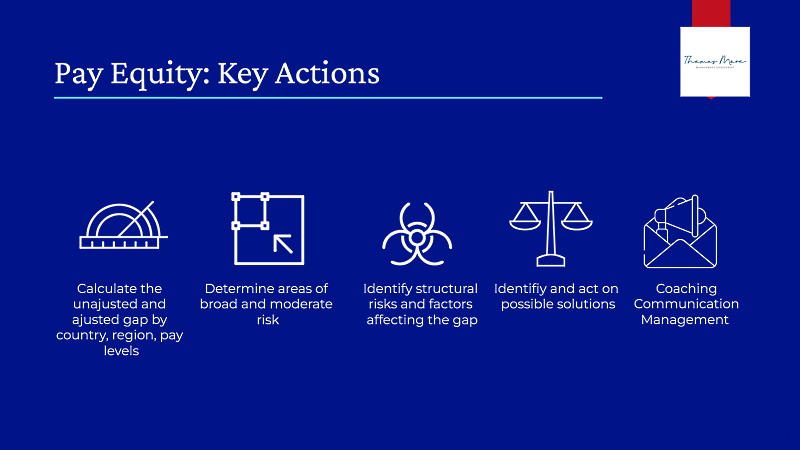What is Pay Equity?
Pay equity means compensating employees when they perform the same or similar tasks regardless of gender, race, ethnicity, or other characteristics. So, for example, gender pay equity is about paying men and women in the same way.
Pay equity is not only calculated in gross or unadjusted terms but can also consider other variables that can affect the difference, such as experience level, performance, and seniority. Thus, for example, the difference can be explained by the fact that the composition of men's and women's positions is different or because men's seniority is different from that of women.
Why is pay equity important?
Legal reasons
In recent times, there has been a significant acceleration of this type of law, not only in several states in the United States, but also in Europe, where in 2023 a directive on this matter was approved applicable to the twenty-seven countries of the European Community. Some European countries, such as Spain, have had legislation in force since 2020. In Latin America, Brazil passed a law in 2023, Peru already has one, while in other countries in the region such as Argentina there are already bills to be discussed and approved. In Asia, Japan adopted a major legislative change in 2022 to reduce the gender gap. In all these laws, to a greater or lesser degree, there are sanctions applicable to organizations that fail to comply with the matter.
Non-legal reasons
Regardless of the imminent advancement of this type of legislation in the United States, Europe, Latin America and the rest of the world, there are several other reasons why an equal pay program can be adopted, including consequences on productivity, retention, climate, engagement, as well as on the reputation of your organization. among others. Consistent compensation policies are also regularly subject to corporate compensation audits that have pay equity at their core.
What to do? Five Key Actions
Prepare adequately in those countries without legislation in force and those with legislation with compliance periods integrate it as soon as possible to achieve compliance.
- Calculate the adjusted and unadjusted pay gap by country, region, and by pay levels.
- Determine areas of broad and moderate risk. That is, those that are above or below the target (in the US and the European Community the normal required gap is 5% difference between men and women).
- Identify structural risks and factors that are affecting the gap.
- Identify and act on possible solutions before the entry into force of laws as in Europe.
- Familiarize the organization with the calculation, identification, and management of actions to reduce gaps, as well as in the coaching and communication of this type of programs in a regular and transparent manner.
TMC has accumulated significant experience in data analysis as well as in the field of compensation, both of which are necessary to achieve results in this area. In July 2022 we launched our book "Diversity, Equity & Inclusion based on evidence" available on Amazon, as part of the necessary background to be able to face this type of challenge in a formal way.

If you want to know more about TMC and its Pay Fairness practice, you can find information in our service section or by writing us.



